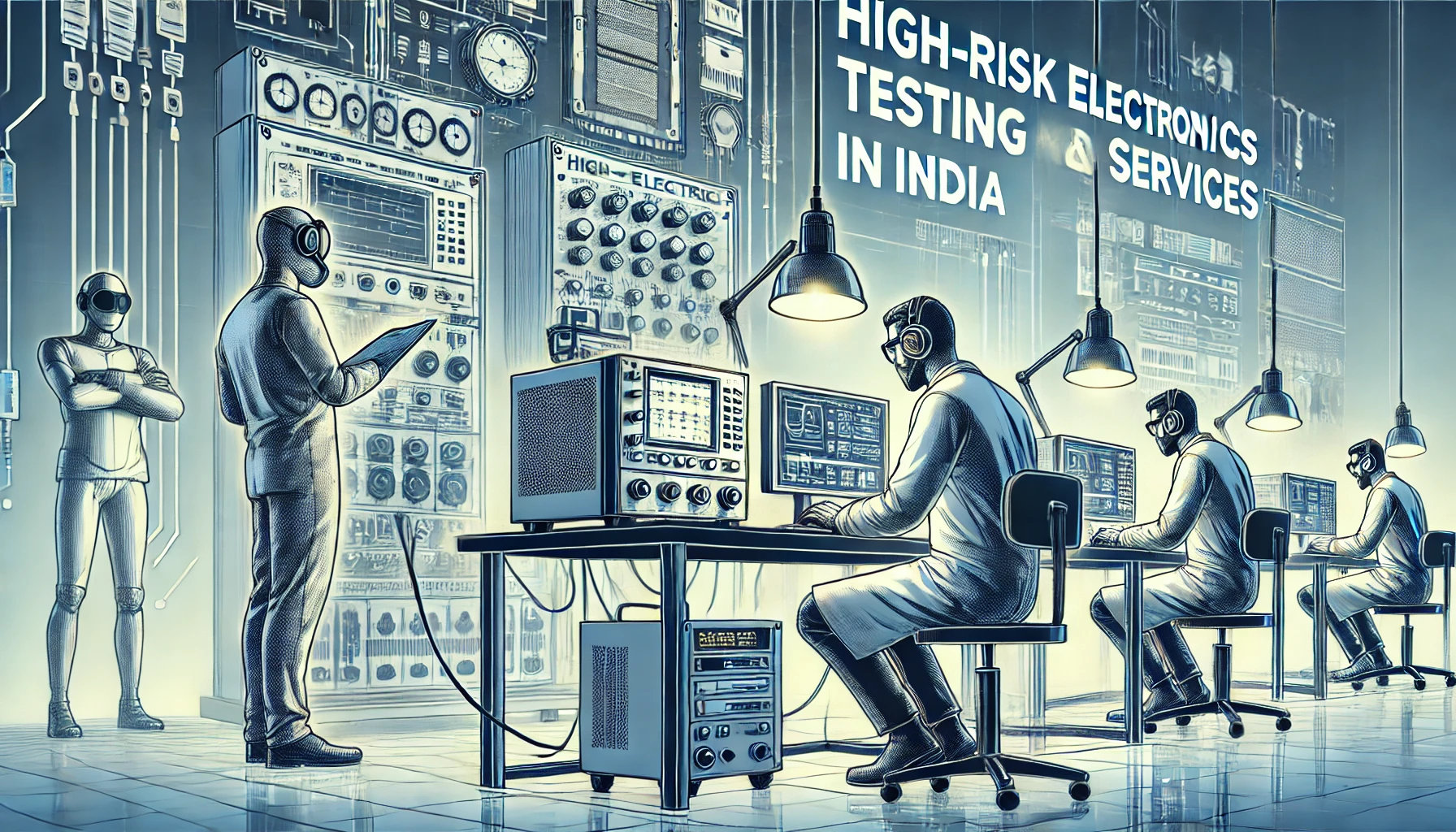AUTHOR-ELIZA FERNZ
Introduction
In the rapidly evolving world of electronics, ensuring the safety, reliability, and compliance of products is more critical than ever. Especially when it comes to high-risk electronics, such as medical devices, aerospace components, automotive systems, and consumer electronics, stringent testing and certification are crucial. In India, as the electronics industry continues to grow, the demand for high-risk electronics testing and certification services is also increasing. This blog will explore why these services are vital, the key types of testing involved, and the role of certification in ensuring product safety and market access.
Why High-Risk Electronics Testing is Essential
High-risk electronics refer to devices that, if they fail, could result in significant harm to users, the environment, or pose serious financial risks. These products are often involved in life-critical operations, such as in medical applications, or are used in extreme environments, like space exploration. Ensuring that these products function as intended is essential, not only for the protection of human lives but also for meeting regulatory standards and avoiding potential legal liabilities.

Types of High-Risk Electronics Testing
India has a robust infrastructure for testing and certifying high-risk electronics, and testing services cover a range of methods depending on the industry, application, and product type. Some of the critical testing(1).
Environmental Testing
Electronics used in extreme environments (such as space exploration, military applications, and automotive systems) need to be tested under various environmental conditions. These include temperature extremes, humidity, vibrations, electromagnetic interference (EMI), and exposure to dust or chemicals. The objective is to ensure the product’s functionality and durability in real-world conditions. The most common types of environmental testing(2) include:
- Thermal and Thermal Cycling Testing: To test how products perform under different temperature conditions, including rapid temperature changes.
- Humidity Testing: To assess a product’s resistance to moisture and condensation, which can cause short circuits and corrosion.
- Vibration Testing: To simulate conditions such as transport, handling, and operational stresses that could cause damage to sensitive components.
- Electromagnetic Compatibility (EMC) Testing: To verify that a product does not emit excessive electromagnetic interference and can function without being affected by other devices.
Electrical Safety Testing
Electrical safety is a key concern for high-risk electronics, as electrical malfunctions can result in fires, electrical shocks, or short circuits. Testing for electrical safety ensures that products meet safety standards and do not present any electrical hazards.
- High Voltage Testing: This checks if the insulation and components of a product can handle electrical surges without causing a breakdown.
- Earth Leakage Testing: It ensures that the product does not cause electric shocks due to leakage currents.
Functional Testing
Functional testing(3) involves verifying that the product works as intended and meets the desired specifications. This includes both normal operation tests and stress tests to simulate extreme usage conditions. Functional tests vary based on the specific type of device being tested but often involve:
- Performance Testing: Ensuring the device performs its intended tasks under various conditions.
- Stress and Load Testing: Checking the device’s ability to function under heavy loads, such as high-frequency inputs or multiple simultaneous operations.
Electromagnetic Interference (EMI) and Electromagnetic Compatibility (EMC) Testing
As the number of electronic devices grows, the potential for electromagnetic interference (EMI) and electromagnetic compatibility (EMC) problems increases. Products must meet EMC standards to avoid interference with other devices and prevent operational failure. Testing includes:
- Radiated Emissions Testing: To measure the electromagnetic radiation emitted by a device.
- Conducted Emissions Testing: To check if the device’s power lines cause electromagnetic interference.
- Radiated and Conducted Immunity Testing: To ensure the device can tolerate EMI from external sources.
Certification Process for High-Risk Electronics
The certification process ensures that a product complies with relevant standards and regulations. It involves a combination of testing, inspections, and documentation. The key certifications for high-risk electronics in India include:

BIS Certification (Bureau of Indian Standards)
For products sold in India, the Bureau of Indian Standards (BIS) certification is required for several types of electronic devices. It ensures that the product meets national safety and quality standards.
CE Marking
For electronics exported(4) to Europe, CE marking indicates that the product conforms to European Union (EU) safety, health, and environmental protection requirements.
UL Certification
Underwriters Laboratories (UL) certification is recognized globally, especially in the United States. It indicates that the product has been tested for safety and meets international standards for electronic devices.
RoHS Compliance
The Restriction of Hazardous Substances (RoHS) certification ensures that electronic devices(5) do not contain harmful levels of certain hazardous materials, such as lead, mercury, or cadmium. This is essential for both environmental reasons and regulatory compliance.
Conclusion
High-risk electronics play an essential role in many industries, from healthcare and aerospace to automotive and defense. Ensuring the safety, reliability, and regulatory compliance of these products through rigorous testing and certification is vital not only for protecting consumers but also for maintaining the credibility of manufacturers. In India, as the electronics industry continues to expand, the demand for comprehensive high-risk electronics testing and certification services will only increase. By adhering to international standards, manufacturers can ensure their products are safe, reliable, and ready for global markets.
FAQs
What are high-risk electronics?
Devices that can cause significant harm if they fail, like medical, aerospace, and automotive electronics.
Why is testing important?
To ensure safety, reliability, and compliance, preventing failures and legal issues.
What types of testing are involved?
Environmental, electrical safety, functional, and electromagnetic compatibility (EMC) testing.
What is certification?
A process verifying that a product meets safety and performance standards for market access.

